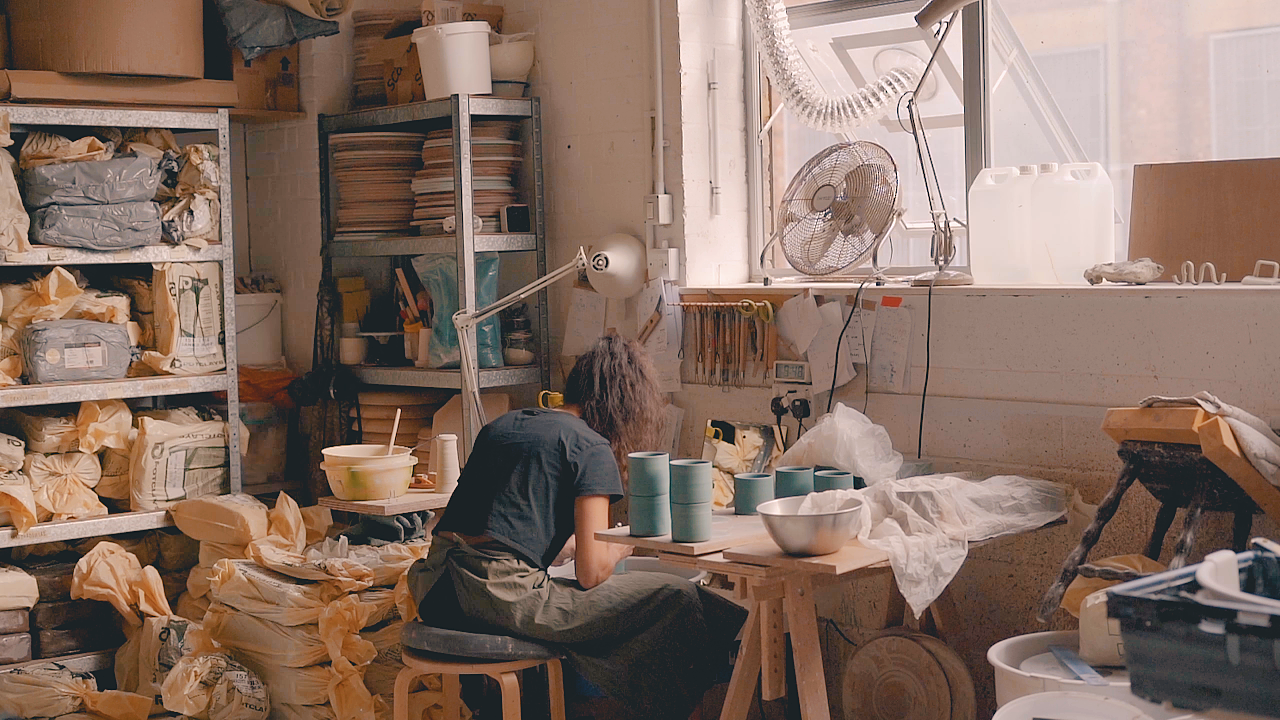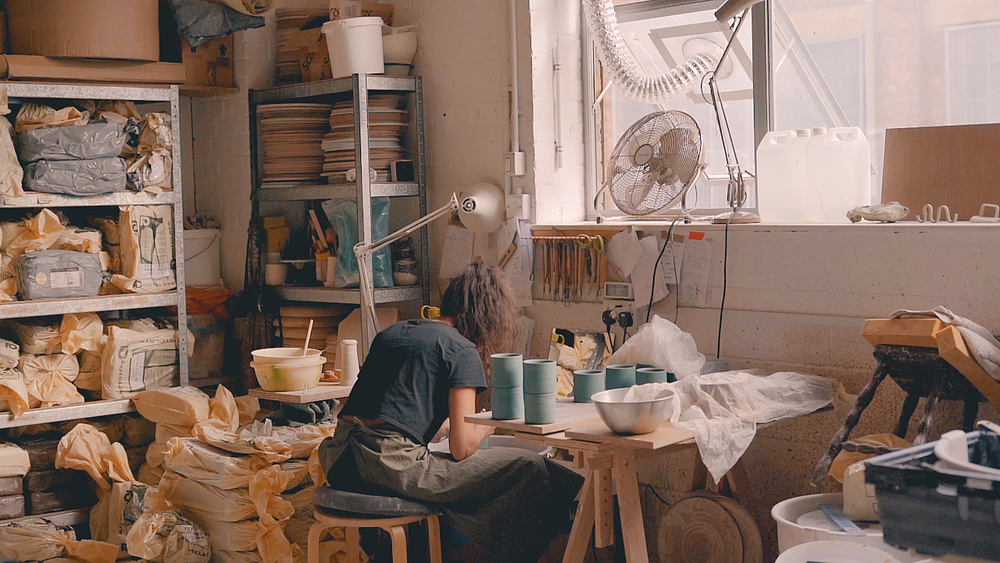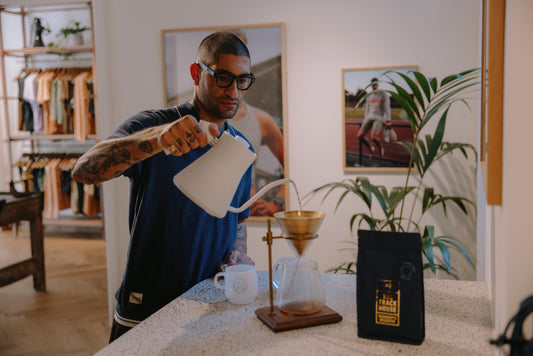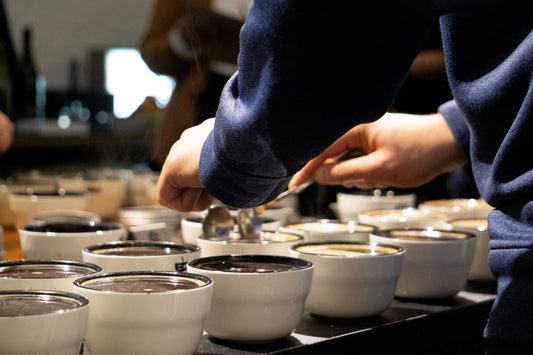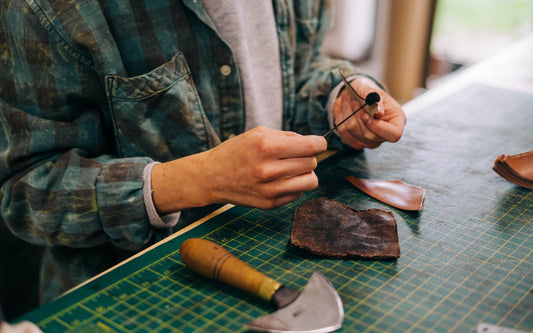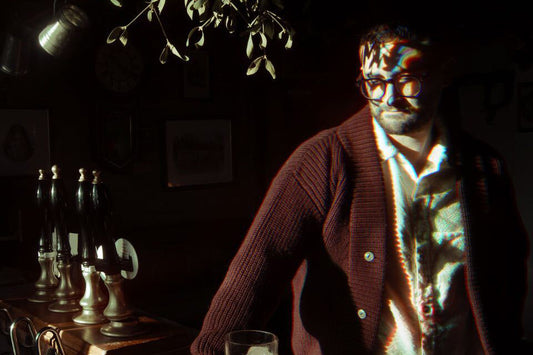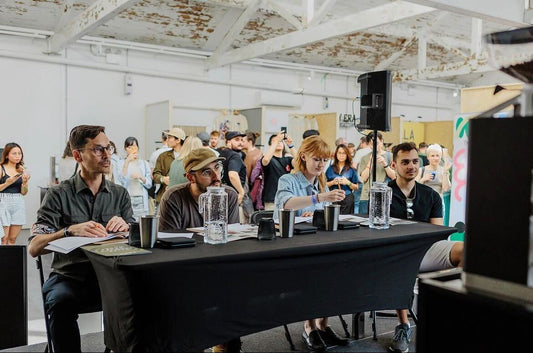
It’s been five years since our last ceramics release and what better reason to introduce our latest than in celebration of our 10th anniversary? Working closely with Andrea Roman of AR Ceramics over several months, we’ve created a beautiful range of limited edition ceramic cups and coffee sets designed to elevate your daily coffee brewing and drinking experience.
Throughout the project, we spent time with Andrea in her studio in Bow, London, to document the process and discover more about her approach to creating her simple but striking pieces. The culmination of these visits can be seen in this video. Ahead of the release of our AR Ceramics x Workshop Coffee collection, we also sat down to talk to her about her journey into the world of ceramics.
“Growing up in Mexico, I always remember things like walking in the market with my family and seeing all of these terracotta pots everywhere and I think that’s what sparked my interest. I never worked with clay as a kid though”.
Indeed, it wasn’t until Roman made it to university at Universidad Nacional Autónoma de México to study Product Design that she discovered her love for the ceramics workshop.
“That’s where I felt more connected with the material. My tutors there were just great and they really encouraged me. They saw an interest, a passion and a degree of skill and they pushed me to continue”.
And that’s exactly what she did. Bringing her love of ceramics with her to London, Andrea moved here in 2013 and, soon after arriving, learnt how to throw using a potter’s wheel. It was this technique that she felt a deep connection.
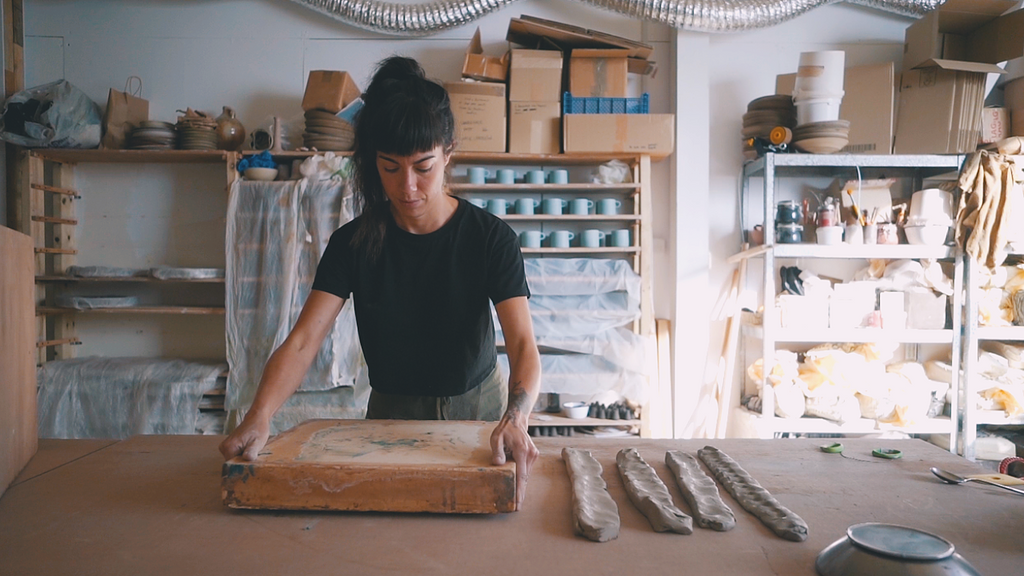
“Ceramics is a slow endeavour and you can’t rush things. You always think you can make things quicker, but there’s a power within the process that’s bigger than all of your deadlines”.
Was that slower, more meaningful timeframe part of the draw?
“Definitely. On the whole, a lot of people aren’t used to the fact that ceramics involve a lot of stages in order for them to be ready. If I start making a cup today, the fastest I’m going to be able to get it back to you is in three weeks time. You have to take your time and enjoy it. You can’t be in a rush and so you really need to be present — it’s absorbing and quite meditative.”.
Does that more considered pace extend to the ingredients and materials you’re working with?
“You do need to make sure that your raw ingredients are as good as they can be and that means having to prepare. I think if you make sure that your starting elements are good, then the rest is just all about making it work and your skill”.

Andrea enlists a less often seen technique in the way she colours her cups. Rather than applying a glaze to each piece, she works a stain into the clay by hand and so the colour stems from the clay itself, rather than a glaze applied towards the end of the process.
Meaning she has to work carefully between batches, it involves adhering to a specific recipe of clay, slip and stain every time to ensure uniformity across pieces.
“I’ve always liked simple, uncomplicated forms. I really love the material itself. Clay for me is something amazing and I love its texture. I like to think of adding colour this way as a chance to get the user closer to the clay. By leaving the external surface unglazed, I’m trying to highlight the peculiar, tactile quality of the clay”

There’s a definite contrast between Andrea’s work and her surroundings. The industrial, somewhat dilapidated nature of the area surrounding her studio emits its own rugged charm. Whilst not immediately obvious, this has an impact on her work.
“The industrial nature of my surroundings – the canal, all the warehouses, looking out of the window and seeing the derelict buildings – as time passes you start appreciating where you are. I love the broken windows, the way the sun is reflected and the light that the windows bring into my studio in the evenings. I really enjoy the basic shapes and forms I see and they inform my work, which I think of as somewhat architectural”.

As Andrea finishes her coffee, her attention turns away from our conversation and back towards her pieces, which sit side by side on a shelf behind us. They seem to almost stand to attention, imposing themselves on the room, but in a subtle way. It’s seeing them like this that leads to the realisation that the collection is even greater than the sum of its parts. Each cup and decanter is impressive in and of itself, but the true feat of Roman’s work is the ability to recreate them again and again to such a high standard and degree of consistency.
“For me, it’s not that I’m making a single piece – the whole group is the piece. I’m thinking about the whole process and how it’s split into different stages; it’s very cyclical and you’re working through them again and again and again.

So is this how we should enjoy them? Placed on a shelf to be looked at and admired?
“I don’t see these as display pieces. I want people to use them every day and to become their favourite thing. They should be more than something that you have on a shelf in your living room or kitchen. I want you to use it and feel it.
The aim is for them to be functional on a daily basis”.
You can shop our limited edition ceramics collection now:
Share:


